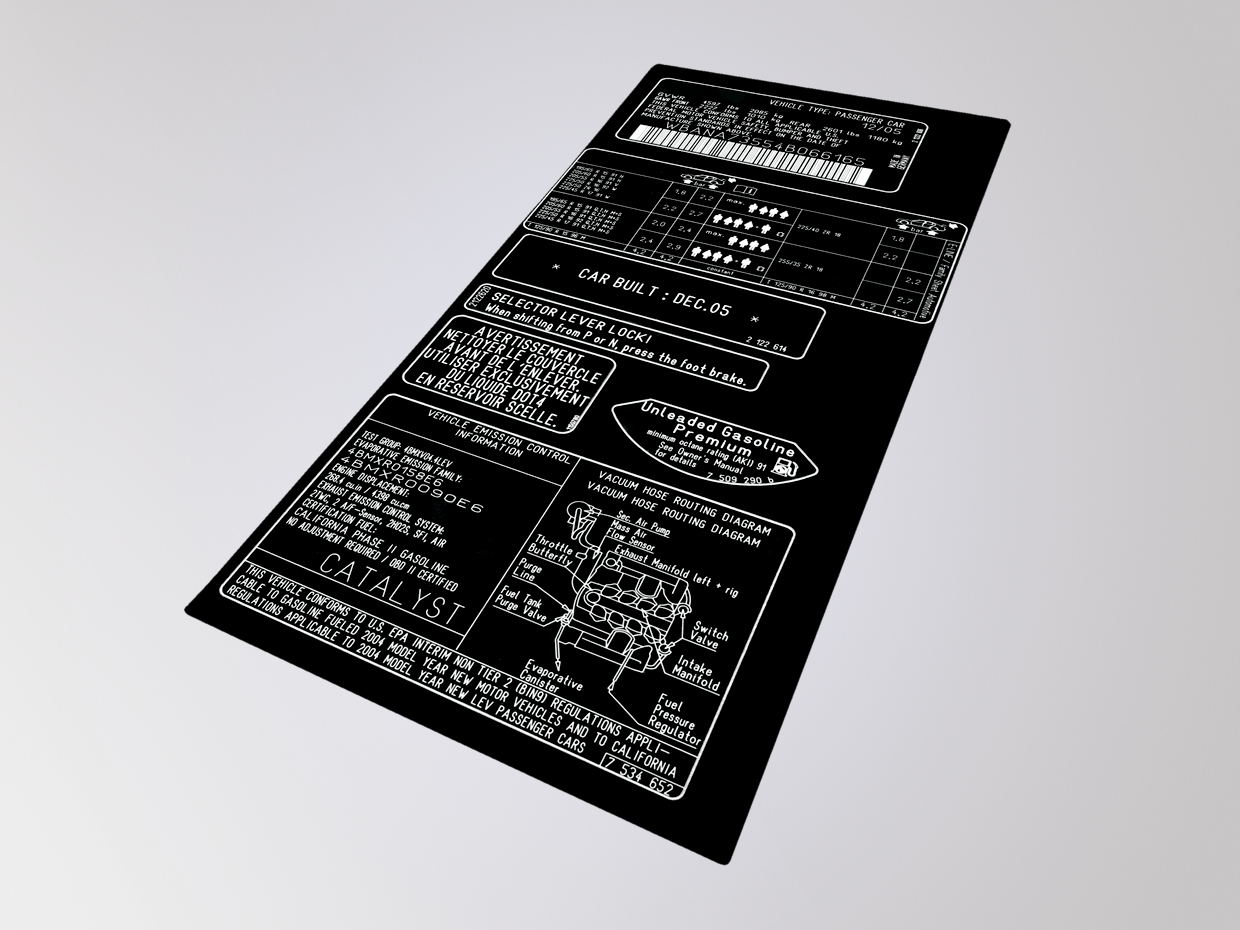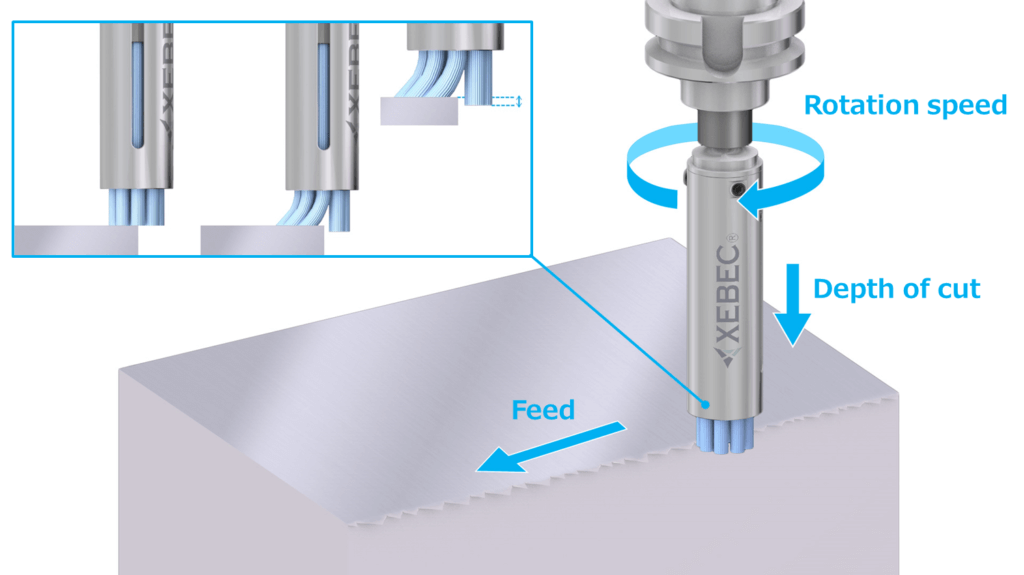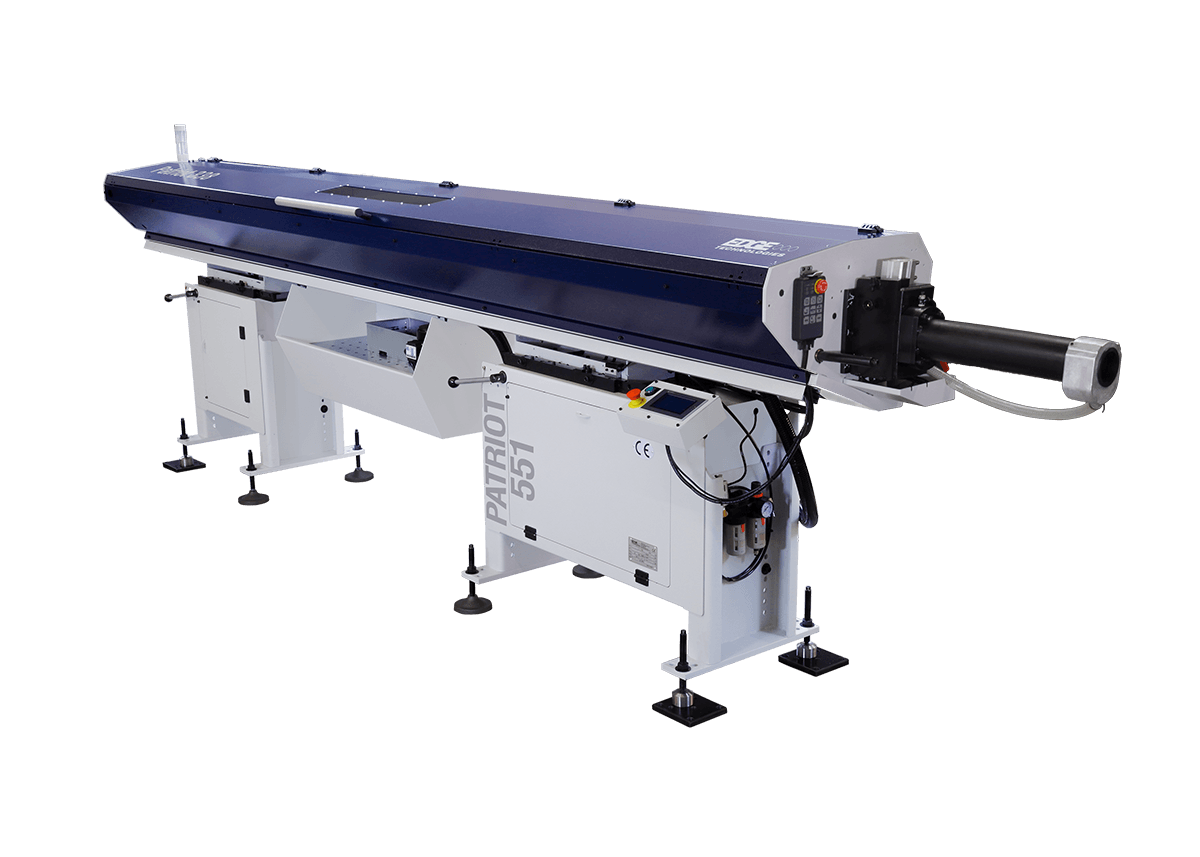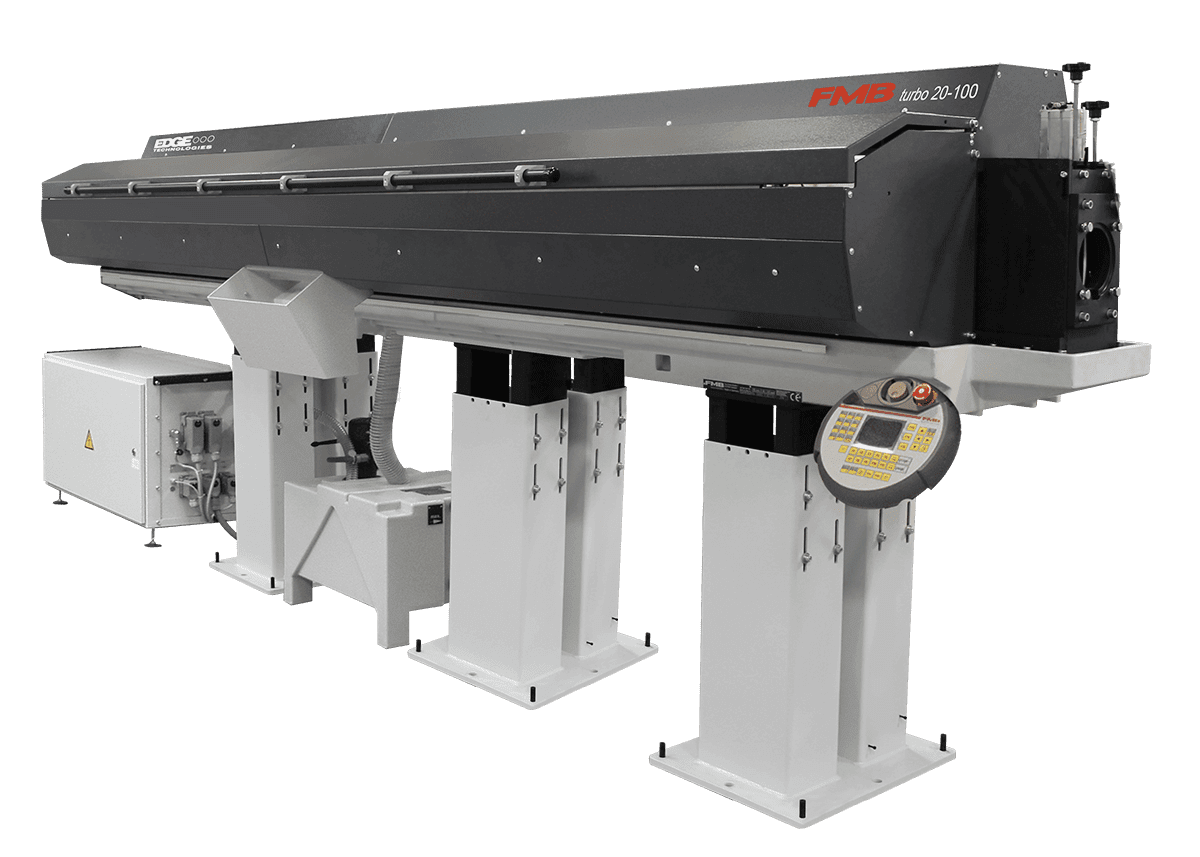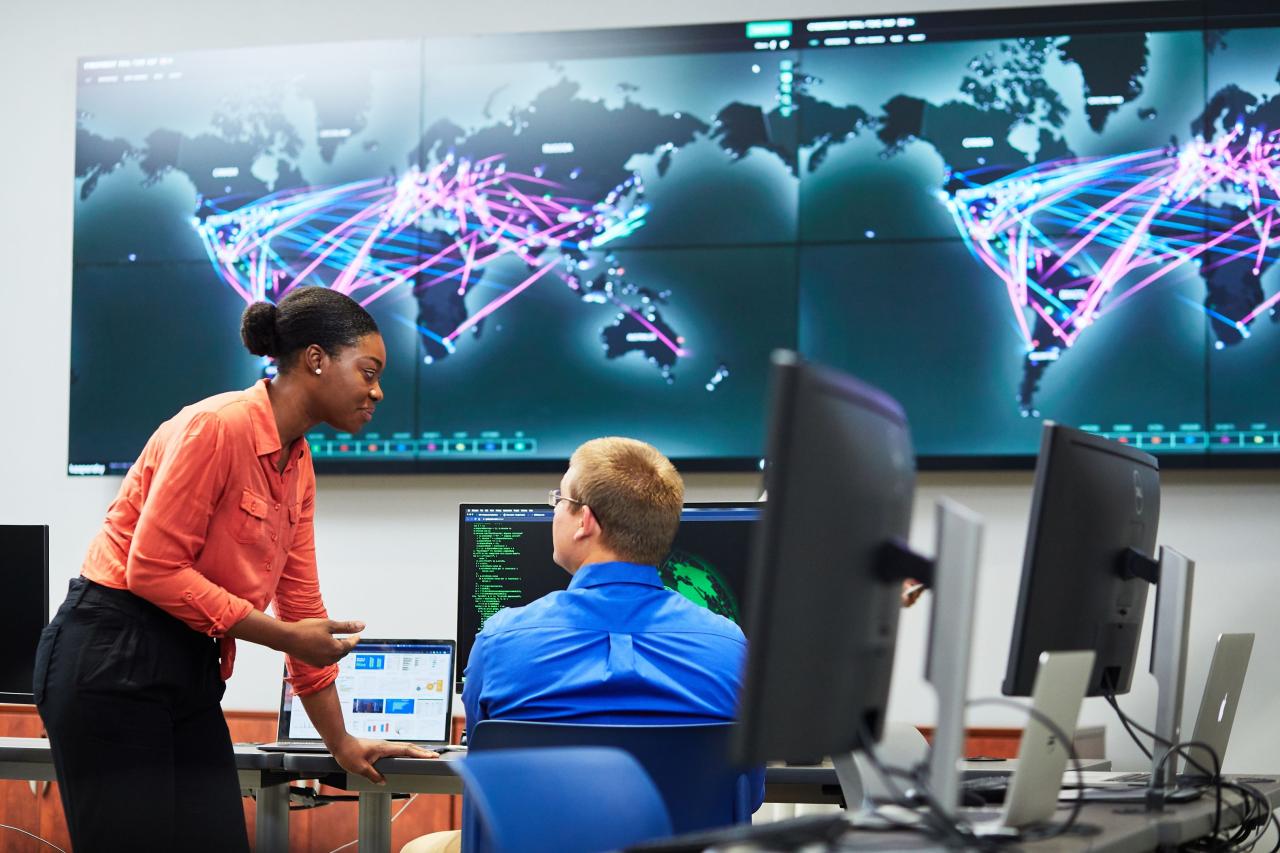Machining Technologies: Shaping the Future of Manufacturing
Machining technologies have been the backbone of modern manufacturing for centuries, driving innovation and shaping the world around us. From the intricate gears of early clocks to the complex components […]
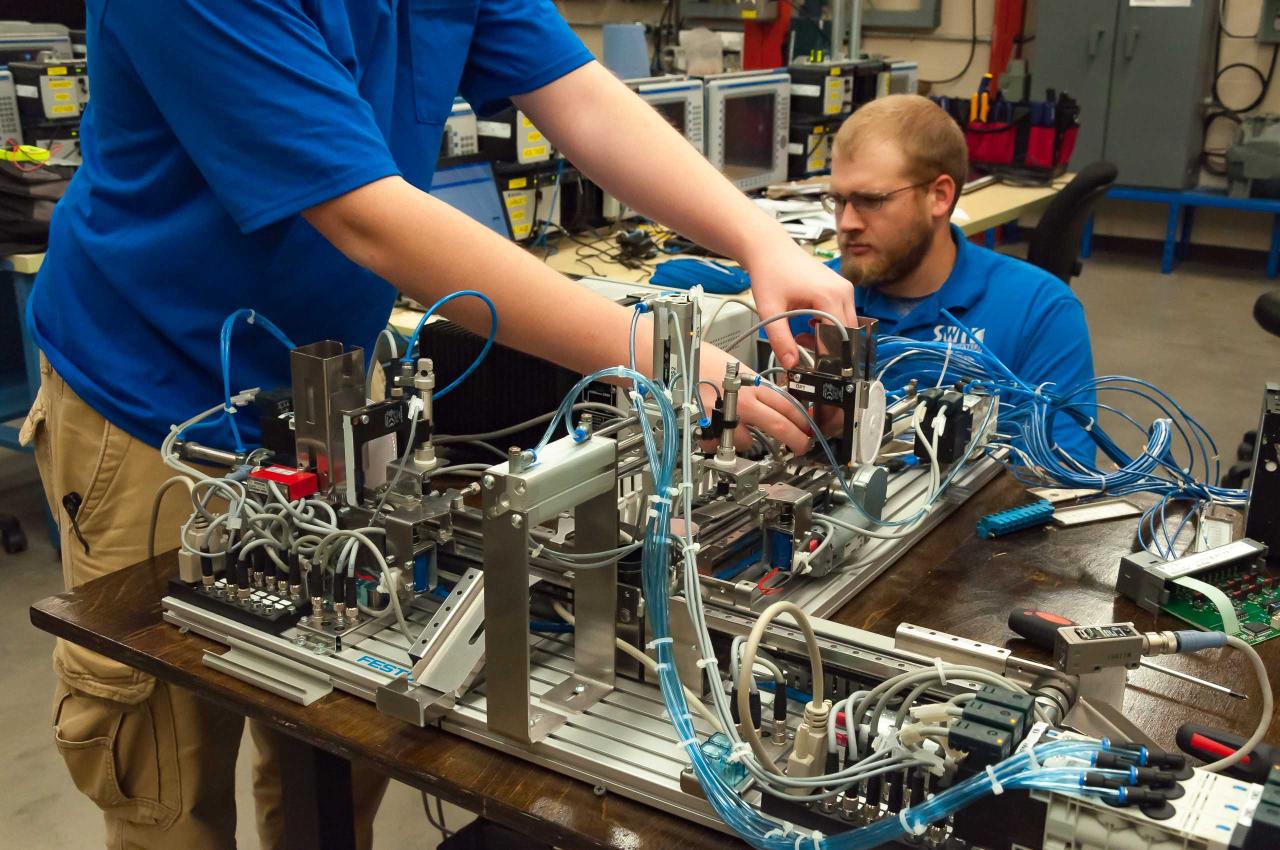
Machining technologies have been the backbone of modern manufacturing for centuries, driving innovation and shaping the world around us. From the intricate gears of early clocks to the complex components of today’s spacecraft, machining has played a crucial role in transforming raw materials into functional products. This journey of innovation has seen the evolution of traditional methods like turning and milling to the sophisticated precision of CNC machining and laser cutting, each step marking a significant leap in efficiency, accuracy, and complexity.
This exploration delves into the fascinating world of machining technologies, examining their historical development, diverse processes, essential tools, and the materials they shape. We’ll explore the role of automation and quality control in modern machining, and delve into the exciting future trends that are poised to revolutionize the industry.
Evolution of Machining Technologies

Machining technologies have played a pivotal role in shaping the modern world, enabling the creation of intricate components and complex systems that underpin our industries and daily lives. From the rudimentary tools of the past to the sophisticated machines of today, the evolution of machining has been marked by a series of groundbreaking advancements that have revolutionized manufacturing processes.
Historical Development of Machining Technologies
The history of machining can be traced back to ancient civilizations, where rudimentary tools were used to shape materials for basic needs. Early humans used stone tools for cutting, grinding, and shaping, while later civilizations developed more sophisticated tools using bronze and iron.
The Industrial Revolution in the 18th and 19th centuries witnessed a significant leap forward in machining technologies. The invention of the steam engine and the development of machine tools, such as lathes, milling machines, and drilling machines, enabled mass production and the creation of standardized parts.
The 20th century saw further advancements in machining technologies, including the introduction of power tools, automation, and computer numerical control (CNC). CNC machining revolutionized the industry by enabling the production of complex parts with high precision and repeatability.
Materials Used in Machining
Machining involves removing material from a workpiece to achieve a desired shape and size. The choice of material is crucial, as it influences the machining process and the final product’s properties. Understanding the characteristics of different materials is essential for selecting the appropriate machining methods, tools, and cutting parameters.
Properties of Commonly Machined Materials
The properties of materials significantly impact their machinability. These properties include:
- Hardness: A material’s resistance to indentation or scratching. Harder materials require more force and energy to cut, leading to increased tool wear.
- Strength: A material’s ability to withstand applied forces without breaking or deforming. Strong materials require higher cutting forces, potentially causing tool breakage.
- Ductility: A material’s ability to deform under tensile stress without fracturing. Ductile materials tend to chip or break during machining, requiring careful tool selection and cutting parameters.
- Toughness: A material’s ability to absorb energy before fracturing. Tough materials can resist impact and shock loads, but they can also be difficult to machine due to their resistance to cutting.
- Machinability: A material’s ability to be cut with ease, determined by factors such as its hardness, strength, and chip formation characteristics.
Challenges and Considerations in Machining Various Materials
Machining different materials presents unique challenges and considerations:
Metals
Metals are widely used in various industries due to their strength, durability, and conductivity. However, machining metals can be challenging due to their high hardness, strength, and tendency to work-harden.
- Tool Wear: High cutting forces and temperatures can lead to rapid tool wear, requiring frequent tool changes and potentially impacting surface finish.
- Chip Formation: Metals tend to form continuous chips, which can clog the cutting tool and impede machining. This can be addressed by using cutting fluids and chip breakers.
- Surface Finish: Achieving a desired surface finish on metals can be challenging due to their tendency to form burrs and chatter marks.
Plastics
Plastics are lightweight, versatile, and readily available, making them popular for various applications. However, their low melting point and tendency to deform under pressure require careful machining techniques.
- Tool Wear: Plastic materials can cause tool wear due to their abrasive nature and tendency to stick to the tool face. Specialized tools and cutting fluids are often used.
- Chip Formation: Plastics tend to form long, stringy chips that can wrap around the tool and impede machining. Chip breakers and vacuum systems are used to manage chips.
- Heat Generation: Plastics can generate significant heat during machining, which can lead to melting and deformation. Cutting fluids and lower cutting speeds are often used to minimize heat generation.
Composites
Composites combine different materials, such as fibers and resins, to achieve unique properties. Machining composites can be challenging due to their heterogeneous structure and the presence of reinforcement materials.
- Tool Wear: The abrasive nature of reinforcement materials can cause rapid tool wear, requiring specialized tools and cutting parameters.
- Fiber Orientation: The direction of reinforcement fibers significantly affects the material’s strength and machinability. Proper tool orientation and cutting paths are crucial for avoiding fiber pullout and delamination.
- Surface Finish: Achieving a smooth surface finish on composites can be challenging due to the presence of fibers and the potential for delamination.
Machining Characteristics of Different Materials, Machining technologies
The following table summarizes the machining characteristics of different materials:
| Material | Hardness | Strength | Ductility | Machinability | Advantages | Disadvantages |
|---|---|---|---|---|---|---|
| Steel | High | High | Moderate | Moderate | High strength, durability, and versatility | Can be difficult to machine, prone to tool wear |
| Aluminum | Moderate | Moderate | High | Good | Lightweight, corrosion-resistant, and easy to machine | Lower strength compared to steel |
| Titanium | High | High | Moderate | Poor | High strength-to-weight ratio, excellent corrosion resistance | Difficult to machine, prone to tool wear |
| Copper | Moderate | Moderate | High | Good | Excellent electrical and thermal conductivity | Soft and prone to deformation |
| Brass | Moderate | Moderate | High | Good | Easy to machine, good corrosion resistance | Lower strength compared to steel |
| Nylon | Low | Low | High | Good | Lightweight, strong, and resistant to chemicals | Can be prone to melting and deformation |
| Acrylic | Low | Low | Moderate | Good | Clear, durable, and easy to machine | Can be brittle and prone to scratching |
| Carbon Fiber | High | High | Low | Poor | High strength-to-weight ratio, excellent stiffness | Difficult to machine, prone to delamination |
Machining Processes and Automation: Machining Technologies
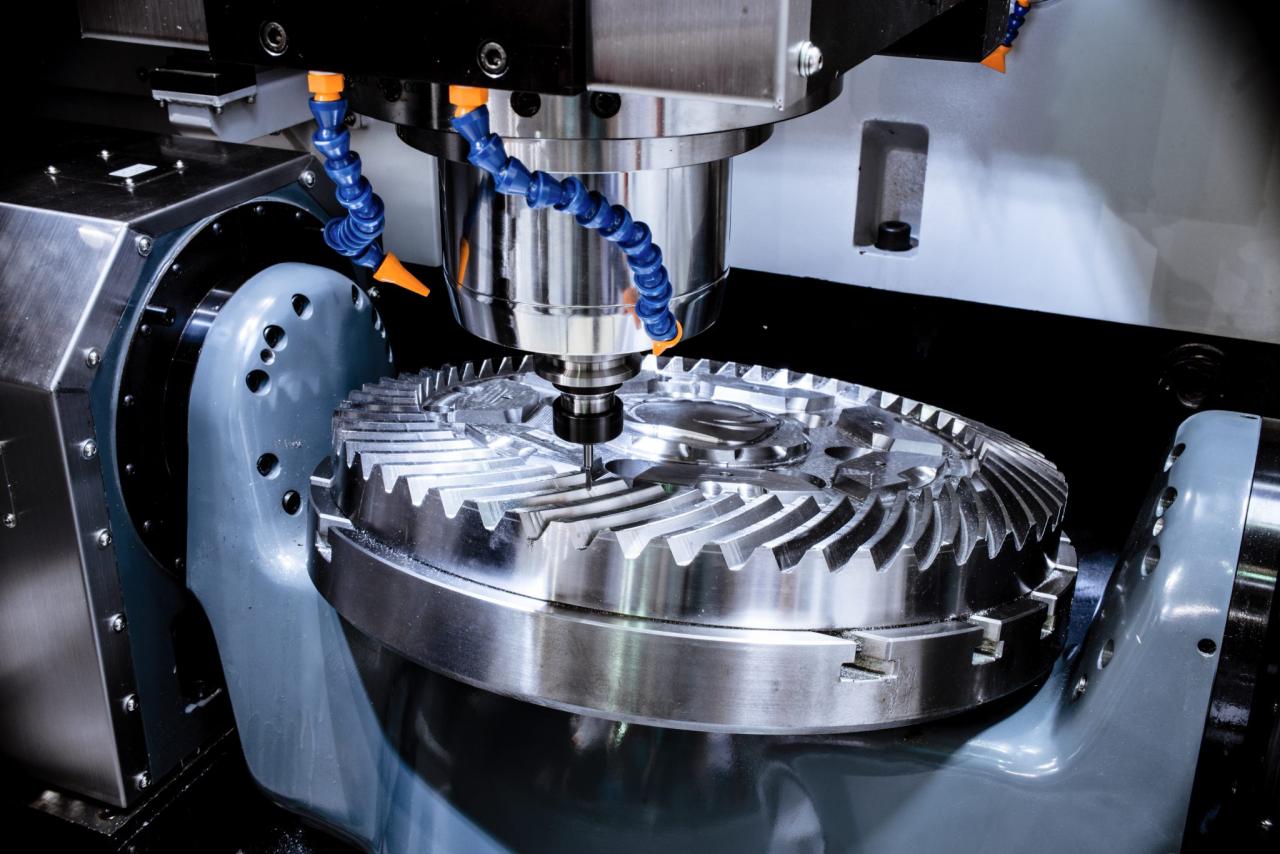
Automation has become an integral part of modern machining processes, revolutionizing the industry with its efficiency and precision. This section explores the role of automation in machining, specifically focusing on CNC machining and robotics, highlighting their benefits and real-world applications.
CNC Machining
CNC machining, short for Computer Numerical Control machining, is a highly automated process where computer programs control the movement of machine tools. The process involves creating a digital model of the desired workpiece, which is then translated into a program that instructs the machine tool to remove material precisely. This method allows for highly accurate and repeatable machining operations, minimizing human error and maximizing efficiency.
CNC machining offers several benefits:
- Increased Accuracy: CNC machines operate with high precision, resulting in consistent and accurate parts. The programmed instructions ensure that every cut is executed with the same level of accuracy, reducing the need for manual adjustments and rework.
- Enhanced Efficiency: Automation eliminates the need for manual intervention, allowing for continuous operation and increased production rates. CNC machines can work around the clock, minimizing downtime and maximizing output.
- Improved Repeatability: CNC machining ensures that each part is identical to the previous one, eliminating variations caused by human error. This consistency is crucial for manufacturing parts that require precise tolerances and assembly.
- Reduced Labor Costs: Automation reduces the reliance on skilled labor, leading to cost savings in the long run. CNC machines can operate with minimal human supervision, allowing for a reduction in labor costs.
- Complex Designs: CNC machining enables the creation of intricate and complex designs that would be challenging or impossible to produce manually. This opens up new possibilities for product design and innovation.
Robotics in Machining
Robotics plays a crucial role in automating various tasks within the machining process, including material handling, machine tending, and part inspection. Robots are designed to perform repetitive and complex tasks with speed and accuracy, improving efficiency and reducing human fatigue.
The integration of robots in machining offers several advantages:
- Improved Productivity: Robots can operate continuously without breaks, increasing productivity and output. They can also handle multiple tasks simultaneously, further enhancing efficiency.
- Enhanced Safety: Robots can perform dangerous tasks, such as handling heavy objects or working with sharp tools, minimizing the risk of workplace injuries to human workers.
- Increased Flexibility: Robots can be easily reprogrammed to adapt to changes in production requirements, making them highly flexible and adaptable to various tasks.
- Improved Quality Control: Robots can be equipped with sensors and vision systems to perform automated inspection tasks, ensuring consistent quality control throughout the manufacturing process.
Examples of Automation in Machining
- Automotive Industry: Automation is extensively used in the automotive industry, from machining engine blocks and transmissions to producing complex body panels. CNC machines and robots are essential for producing high-quality parts at high volumes, ensuring consistent performance and safety standards.
- Aerospace Industry: The aerospace industry relies heavily on automation for manufacturing aircraft components, such as turbine blades, landing gear, and fuselage sections. CNC machining and robotics enable the creation of intricate and lightweight components with high precision, crucial for aircraft performance and safety.
- Medical Devices: Automation is essential for manufacturing medical devices, where precision and accuracy are paramount. CNC machines and robots are used to produce implants, surgical instruments, and other medical devices with high precision, ensuring safety and effectiveness.
Quality Control and Measurement
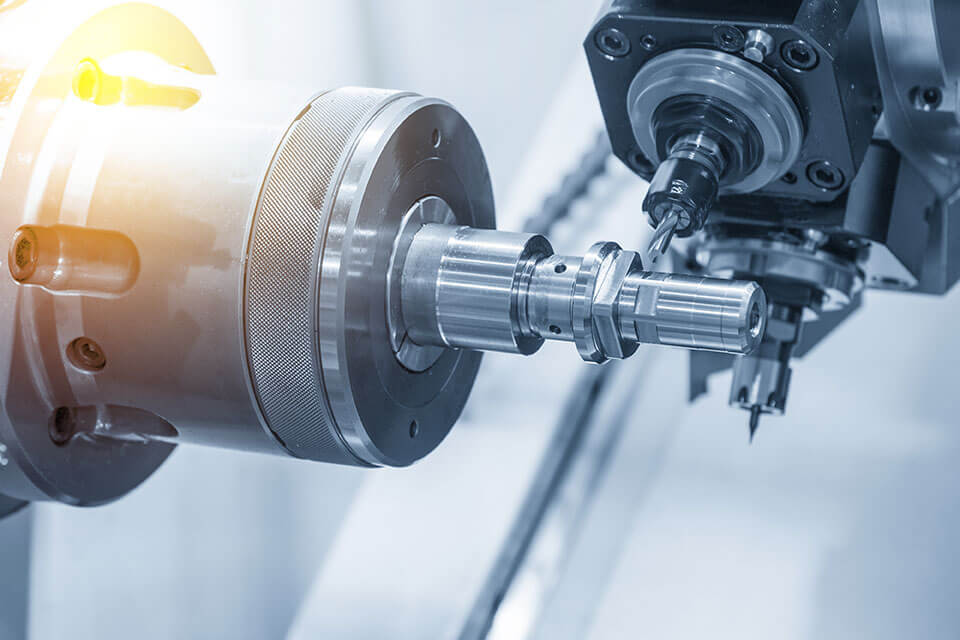
Quality control in machining is crucial for ensuring that manufactured parts meet the required specifications and function correctly. This involves monitoring and controlling various aspects of the machining process, including dimensional accuracy, surface finish, and material properties.
Dimensional Accuracy and Surface Finish
Dimensional accuracy refers to the precision of a machined part’s dimensions, ensuring that it fits within the specified tolerances. Surface finish, on the other hand, refers to the quality of the surface, encompassing aspects like roughness, waviness, and lay. These aspects are critical for the performance, functionality, and durability of machined parts.
- Dimensional accuracy is achieved through careful selection of machining parameters, such as cutting speed, feed rate, and depth of cut. This requires precise control over the machine tool’s movements and the use of high-precision measuring instruments.
- Surface finish is influenced by factors like the type of cutting tool, the cutting conditions, and the material being machined. Utilizing appropriate cutting tools, optimizing cutting parameters, and employing surface finishing techniques can improve surface finish.
Measurement Techniques in Machining
Several measurement techniques are employed in machining to ensure dimensional accuracy and surface finish. These techniques can be broadly categorized as traditional methods and advanced technologies.
- Traditional methods include calipers, micrometers, and dial gauges. These instruments provide accurate measurements for linear dimensions and surface features.
- Advanced technologies encompass coordinate measuring machines (CMMs) and laser scanning.
- Coordinate Measuring Machines (CMMs) are highly accurate machines that use a probe to measure the coordinates of points on a part. CMMs are capable of measuring complex geometries and providing detailed dimensional data.
- Laser scanning utilizes a laser beam to measure the surface profile of a part. This technology provides a rapid and non-contact method for capturing surface details, including roughness and waviness.
Metrology in Machining
Metrology plays a crucial role in ensuring product quality and compliance with industry standards. It involves the science of measurement and the application of measurement techniques to ensure that manufactured parts meet specified requirements.
- Calibration of measuring instruments is essential for maintaining accuracy and traceability. Regularly calibrated instruments ensure consistent and reliable measurement results.
- Statistical process control (SPC) utilizes statistical methods to monitor and control the machining process. SPC helps identify potential deviations from desired specifications and allows for timely adjustments to maintain quality.
- Dimensional inspection involves verifying the dimensions of machined parts against design specifications. This can be performed using various measurement techniques, including CMMs and laser scanning.
- Surface finish inspection involves evaluating the quality of the machined surface using techniques like profilometry and surface roughness measurement.
Future Trends in Machining Technologies
The field of machining is constantly evolving, driven by advancements in technology and a growing demand for precision, efficiency, and sustainability. Emerging trends are reshaping the industry, introducing innovative processes and materials that promise to revolutionize manufacturing.
Additive Manufacturing (3D Printing)
Additive manufacturing, commonly known as 3D printing, is a transformative technology that builds objects layer by layer from a digital design. This process offers significant advantages over traditional machining methods, including:
- Increased Design Flexibility: 3D printing allows for the creation of complex geometries and intricate designs that would be impossible or extremely difficult to achieve with traditional machining. This opens up new possibilities for product design and customization.
- Reduced Material Waste: Additive manufacturing uses only the material needed to create the final product, minimizing waste and contributing to a more sustainable manufacturing process. This is particularly important in industries where material costs are high or where waste disposal is a concern.
- Rapid Prototyping: 3D printing enables rapid prototyping, allowing manufacturers to quickly create and test new designs. This reduces lead times and accelerates the product development cycle.
- On-Demand Production: Additive manufacturing facilitates on-demand production, where parts can be printed as needed, eliminating the need for large inventories and reducing storage costs. This is particularly beneficial for low-volume production runs or for creating customized products.
The adoption of 3D printing is expanding across various sectors, including aerospace, automotive, medical devices, and consumer goods. For example, in the aerospace industry, 3D printing is used to create lightweight and complex components for aircraft, reducing fuel consumption and improving performance.
Laser-Assisted Machining
Laser-assisted machining combines the precision of laser technology with the power of traditional machining processes. Laser beams are used to cut, engrave, or weld materials with exceptional accuracy and speed. This technique offers several benefits:
- High Precision: Laser beams can be focused to a very small spot, allowing for extremely precise cutting and engraving. This is essential for applications requiring high tolerances and intricate details.
- Reduced Tool Wear: Laser machining does not involve physical contact between the tool and the workpiece, eliminating tool wear and extending tool life. This reduces downtime and maintenance costs.
- Heat-Affected Zone Control: Laser machining allows for precise control of the heat-affected zone, minimizing distortion and damage to the workpiece. This is crucial for applications where heat sensitivity is a concern.
- Material Versatility: Laser machining can be used to process a wide range of materials, including metals, plastics, ceramics, and composites. This versatility makes it suitable for diverse applications across different industries.
Laser-assisted machining is widely used in various industries, including automotive, electronics, medical devices, and aerospace. For instance, in the automotive industry, laser cutting is used to create complex shapes for car bodies and components, enhancing design flexibility and reducing manufacturing time.
Nanotechnology in Machining
Nanotechnology is revolutionizing machining by enabling the manipulation of materials at the atomic and molecular level. This opens up new possibilities for creating materials with enhanced properties, such as increased strength, hardness, and wear resistance. Some key applications of nanotechnology in machining include:
- Nano-Lubricants: Nano-lubricants are formulated using nanoparticles that provide superior lubrication properties compared to conventional lubricants. These lubricants reduce friction and wear, leading to improved tool life and surface finish.
- Nano-Coatings: Nano-coatings are applied to tools and workpieces to enhance their surface properties. These coatings can improve wear resistance, corrosion resistance, and hardness, resulting in longer tool life and improved product quality.
- Nano-Structured Tools: Tools with nano-structured surfaces exhibit improved cutting performance, reduced tool wear, and enhanced surface finish. This is achieved by controlling the shape and size of features at the nanoscale.
The use of nanotechnology in machining is still in its early stages, but its potential impact on the industry is significant. It promises to enhance machining processes, improve product quality, and reduce manufacturing costs. For example, in the aerospace industry, nano-coatings are being used to create lightweight and durable components for aircraft, improving fuel efficiency and extending component life.
Conclusive Thoughts
The world of machining technologies is a testament to human ingenuity and the constant pursuit of precision and efficiency. As we look ahead, the integration of advanced technologies like additive manufacturing, laser-assisted machining, and nanotechnology promises to further enhance the capabilities and applications of machining, pushing the boundaries of what’s possible in manufacturing. This journey of innovation continues, driven by the desire to create more efficient, sustainable, and innovative products that shape our future.
Machining technologies have come a long way, with advancements in automation and precision. But the way these technologies are implemented and managed is also evolving, with businesses relying on robust online platforms. Understanding the intricacies of an e-commerce technology stack can be crucial for optimizing machining processes, from ordering raw materials to managing inventory and tracking production runs.
Ultimately, the success of modern machining operations often hinges on a seamless integration of both physical and digital systems.
